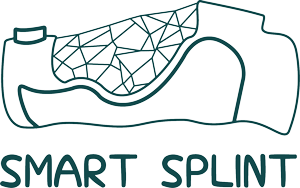
Navigating the Challenges: Understanding the Difficulties Faced by Individuals with Fractures or Burn Areas
Introduction:
In the tapestry of life, unforeseen challenges can manifest in the form of injuries, fractures, or burn areas, disrupting the normal rhythm of daily existence. Beyond the physical pain, individuals grappling with such conditions often encounter a spectrum of difficulties that extend to emotional, social, and practical aspects of life. In this blog, we aim to delve into the multifaceted difficulties faced by those navigating the journey of recovery from fractures or burn areas.
1. Physical Pain and Discomfort:
– At the forefront of the challenges is the physical pain and discomfort that accompanies fractures or burn injuries. The healing process can be arduous, and individuals may endure persistent pain, restricted mobility, and the inconvenience of managing their daily activities with compromised physical well-being.
2. Emotional Impact and Mental Strain:
– The emotional toll of facing fractures or burn areas should not be underestimated. Individuals may experience heightened stress, anxiety, or even depression as they grapple with the impact of their injuries on their daily lives, self-esteem, and overall mental well-being.
3. Social Isolation and Stigma:
– The visible nature of injuries, especially burns, can lead to social isolation and the perpetuation of stigmas. Individuals may feel self-conscious or face societal judgment, leading to a sense of isolation that further compounds the emotional challenges of their situation.
4. Financial Strain and Employment Issues:
– Injuries can disrupt one’s ability to work, leading to financial strain. Medical bills, rehabilitation costs, and the potential loss of income can create a significant burden, adding layers of stress to an already challenging situation.
5. Dependency on Others:
– The physical limitations resulting from fractures or burn injuries often necessitate a degree of dependency on others for assistance with daily tasks. This shift in independence can be emotionally challenging and may require individuals to adapt to a new dynamic in their relationships.
6. Challenges in Daily Activities:
– Simple daily activities that were once taken for granted may become daunting tasks. From personal hygiene routines to household chores, individuals with fractures or burn areas may face difficulties in maintaining their normal routines, leading to a sense of frustration and dependency.
7. Extended Recovery Periods:
– The recovery process for fractures or burn injuries can be lengthy, requiring patience and resilience. Extended periods of rehabilitation and treatment may lead to frustration and feelings of stagnation, as individuals long to resume their normal activities.
8. Psychosocial Impact on Relationships:
– The challenges of facing fractures or burn areas can extend to relationships with family, friends, and romantic partners. The emotional and physical strain may test the dynamics of these relationships, requiring open communication and mutual support.
9. Risk of Complications and Infections:
– Fractures and burns carry the risk of complications and infections, adding another layer of concern for individuals in recovery. Vigilance in wound care and adherence to medical protocols become paramount to prevent further complications.
10. Navigating the Healthcare System:
– Navigating the complexities of the healthcare system, including appointments, treatments, and insurance, can be a formidable task for individuals dealing with fractures or burn areas. The bureaucratic aspects of healthcare may add stress to an already challenging situation.
Conclusion:
Understanding the difficulties faced by individuals dealing with fractures or burn areas is essential in providing comprehensive support during their recovery journey. Beyond the physical healing, addressing the emotional, social, and practical challenges is crucial for holistic rehabilitation. It is a collective responsibility to foster empathy, promote inclusivity, and contribute to creating an environment where individuals facing such difficulties feel supported, understood, and empowered on their path to recovery


